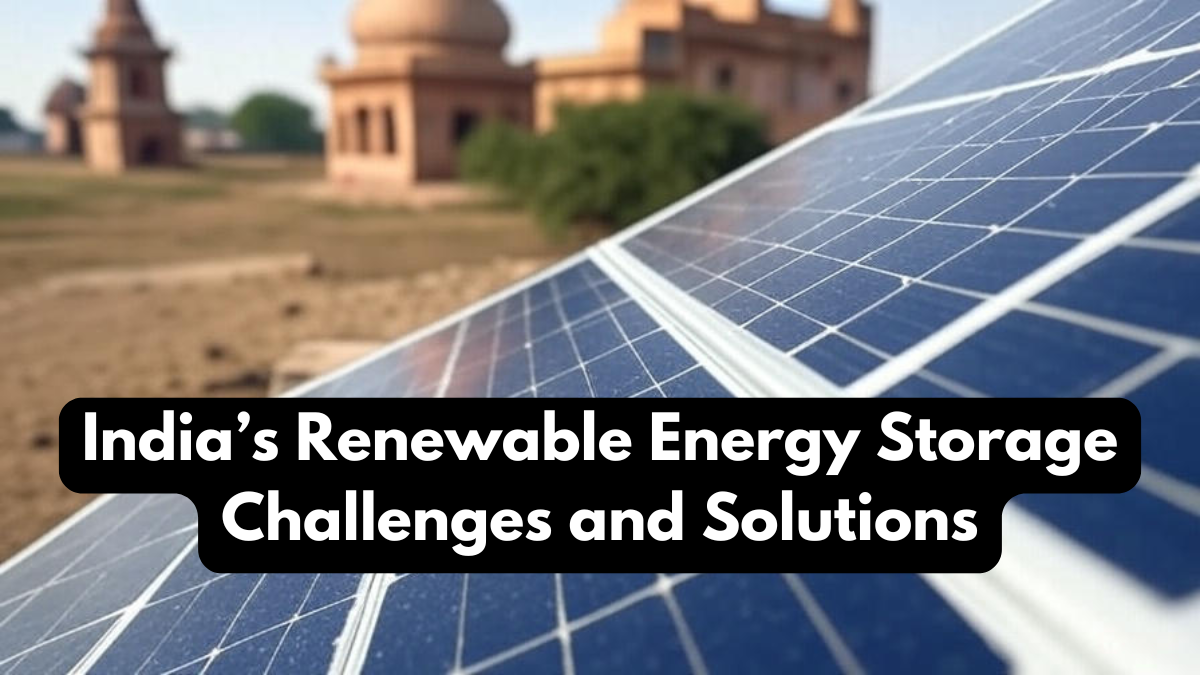Renewable energy India has become one of the fastest-growing sectors, with the country making bold commitments to solar, wind, and other clean energy sources. However, one of the biggest hurdles is energy storage. Without reliable systems to store surplus power, renewable energy cannot meet consistent demand. This is where battery storage plays a decisive role, ensuring that green power is available even when the sun is not shining or the wind is not blowing. Addressing storage challenges is central to making India’s renewable transition successful.

The Rise of Renewable Energy in India
India has set ambitious targets of achieving 500 GW of renewable energy capacity by 2030. Solar and wind projects dominate the landscape, transforming the energy sector. However, the intermittency of these sources poses a significant challenge. Despite the progress in generation, the lack of large-scale battery storage remains a bottleneck.
Key drivers of renewable energy India include:
- Government policies promoting clean energy investment
- Declining costs of solar panels and wind turbines
- Private sector participation in renewable projects
- Global climate commitments and domestic energy security needs
But without parallel development of storage systems, this progress risks hitting a wall.
The Challenge of Energy Storage
The success of renewable energy India depends on how effectively power can be stored and distributed. Currently, storage infrastructure is inadequate to manage large-scale renewable power. This leads to wastage when supply exceeds demand and shortages during peak usage hours.
Major storage challenges include:
- High cost of advanced battery storage solutions
- Limited domestic manufacturing capacity for batteries
- Dependence on imported lithium and rare earth materials
- Lack of a robust policy framework for storage adoption
Without addressing these barriers, renewable energy will remain inconsistent and unreliable for large-scale needs.
Comparative Analysis of Storage Options
To understand India’s choices, it is important to compare different storage methods available for renewable integration:
Storage Technology |
Advantages |
Limitations |
|---|---|---|
Lithium-ion Batteries |
High efficiency, scalable |
Expensive, raw material dependency |
Pumped Hydro Storage |
Large capacity, proven technology |
Location-specific, high initial costs |
Flow Batteries |
Long life, suitable for grid storage |
Still in early stages, costly |
Thermal Storage |
Useful for solar thermal plants |
Limited applications, less efficient |
This table highlights that while battery storage remains the most scalable option, India needs a diversified storage approach for long-term sustainability.
Policy and Industry Initiatives
The government has recognized the urgency of storage in renewable energy India and introduced incentives for battery manufacturing under the Production Linked Incentive (PLI) scheme. Major Indian companies are investing in battery storage projects, while global players are setting up joint ventures. Additionally, pilot projects in pumped hydro and flow batteries are being tested across different states.
Encouraging private-public collaboration and building research capacity will be crucial in driving innovation and reducing costs. By promoting indigenous battery manufacturing, India can reduce its dependence on imports while creating jobs in the green economy.
Conclusion
The success of renewable energy India will not only depend on how much power is generated but also on how effectively it is stored. Battery storage is the backbone of this transition, providing reliability and resilience to the grid. While high costs and material dependency remain challenges, proactive policy, technological innovation, and investment can turn obstacles into opportunities. India has the potential to emerge as a global leader in renewable energy storage if it acts decisively now.
FAQs
What is renewable energy India focusing on?
It focuses on expanding solar, wind, hydro, and other clean sources to reduce dependence on fossil fuels and achieve climate goals.
Why is battery storage important for renewable energy?
Battery storage ensures that renewable power is available on demand, even when natural sources like sunlight and wind are not consistent.
What are the main challenges in renewable energy India?
The major challenges include storage limitations, high costs, grid integration, and dependence on imported battery materials.
How is India addressing battery storage issues?
India is promoting local manufacturing through policies like the PLI scheme, encouraging private investment, and piloting new technologies.
What is the future of renewable energy storage in India?
The future lies in diversified storage systems, cost reductions, and large-scale deployment of batteries, supported by strong government policies.
Click here to learn more